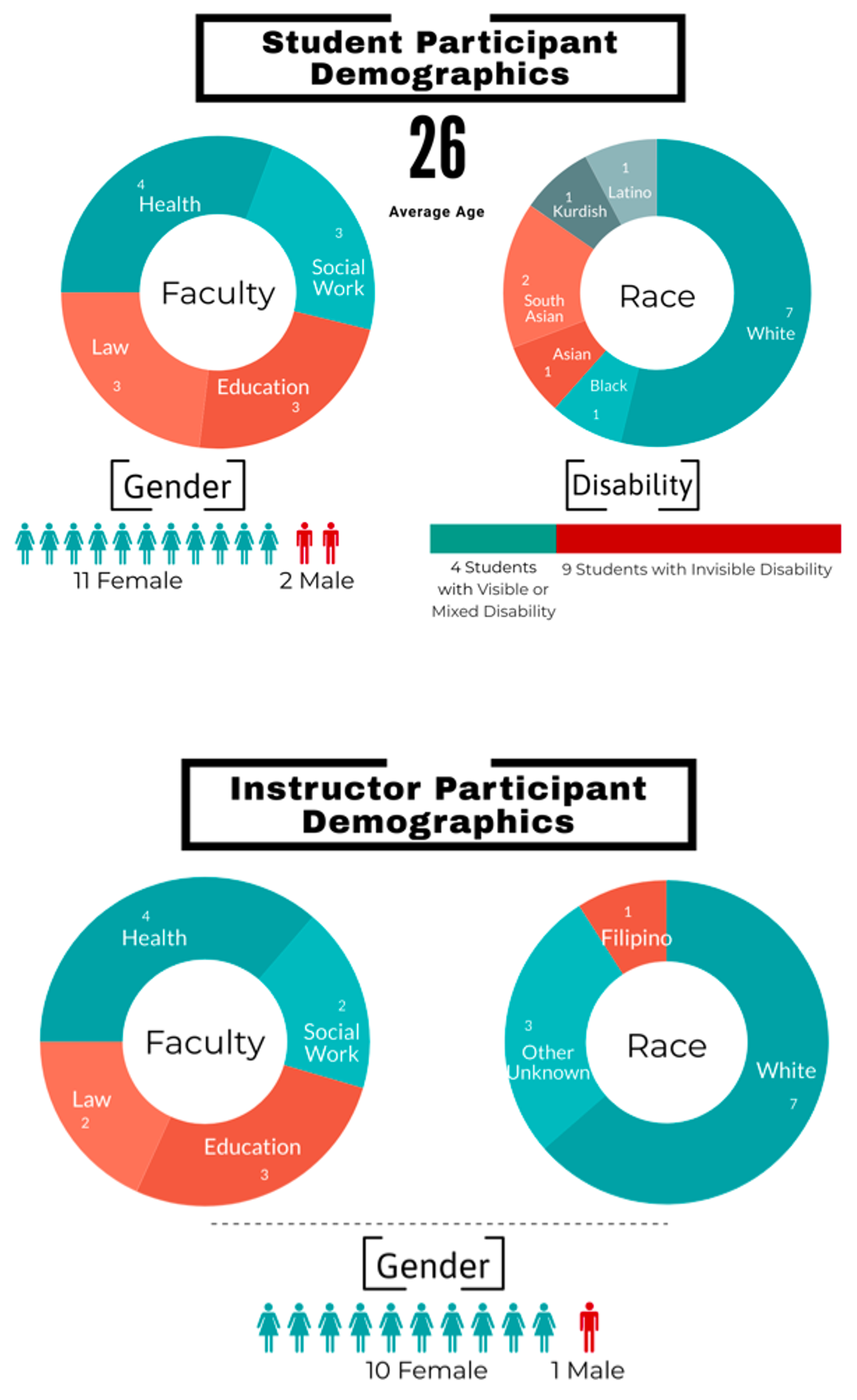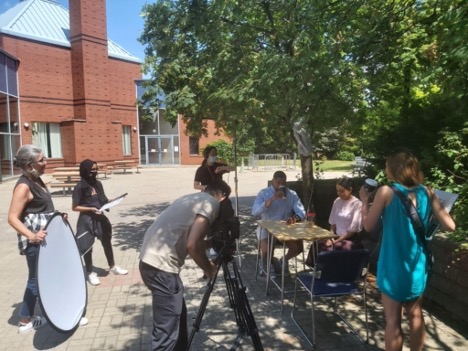The ACTon Participatory Visual Method
In 2020, 13 disabled students with placement experience and 11 placement instructors engaged in one-on-one interviews and made short videos about their experiences navigating disability accommodations in placements. This resulted in 24 interview transcripts and 22 videos.

Student participants joined in focus groups to analyze the videos. They identified key decision points for instructors and students in relation to supporting students’ access to accommodation throughout the placement process (beginning and mid-placement).
These findings, combined with the research team’s thematic analysis findings of interview transcripts, were used to write two interactive video scripts: one from the perspective of a disabled student in a placement at a community health centre and one from the perspective of a nursing instructor with disabled students in her clinical placement course. Three decision points in each script invite viewers to consider key moments in the placement process in which a student’s right to accommodation is challenged. In effect, there are five unique storylines for each script that explore challenges, resources, and responses that instructors and disabled students may encounter during a placement. The scripts were reviewed by the project advisory board, which included disabled students, activists and scholars in disability studies. Based on advisory board feedback, and with the support of Candida Paltiel, the scripts went through several rounds of revisions.
The scripts were then used to create videos, which were directed by Reiner Bello-Sanchez, Katie MacEntee, and Olivia Tilley. A diverse and dedicated cast of actors, many of whom were disabled, brought the characters to life. Additional production support was provided by Lillian Heinson, Khadija Bari, and Sapphire Huang.
The Videos
It is every disabled student’s human right to be accommodated in placements and in experiential education, and it is imperative that institutional policies support this right. While the ACTon videos show two placement settings, in reality there are myriads of disabilities and placement settings. Often, individual accommodations must be navigated on a case-by-case basis. Thus, the ACTon videos do not depict easy answers or prescribe step-by-step solutions for students or instructors. The aim of the videos is to inspire viewers to reflect on and discuss their placement settings and identify resources that are available or needed to better support students reach their full potential.

Resource Development Process
To develop resource content, the ACTon project engaged in a multi-step consultation process with disabled students, alumni, instructors, and experiential education experts. A team of individuals, including disabled students, were involved in creating and piloting the resource content and designing the open-access interface.


